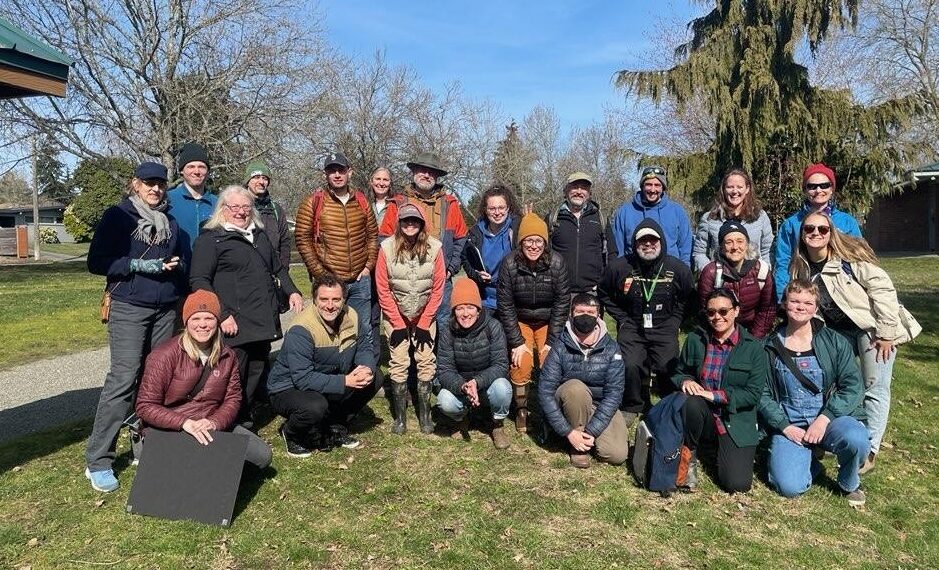Designing the Future of Roxhill Bog
Roxhill Bog has faced its share of challenges over the years, but we were excited to host an enthusiastic crowd of partner organizations at the park to learn more about the efforts being made to restore this wetland and welcome community back into the park.

Residents of southwest Seattle and regular followers of DNDA’s work may already be familiar, but for the uninitiated, Roxhill Bog is the historic headwaters of Longfellow Creek and one of the city’s few remaining peat bogs.
A series of construction projects throughout the last century has reshaped the bog, reduced its size and changed its functions into the park we have today. Recently, it has become apparent that the hydrology of the area has also changed so that it retains significantly less water.
Wetlands like Roxhill need saturated soils for extended lengths of time in order to function properly, and as the park has dried up the peat underfoot has shrunk in size, causing soil settling and structural issues with the trail system and bridges. It has also led to significant changes in the plant community that grows in the environment.

Leishman explained that the pilot study will involve installing underground barriers along the edge of one of the wetland cells to see if that will help retain more water. She compared it to “repairing a broken bathtub.”
If the study is successful, then there is opportunity to replicate it, installing additional barriers to help hold water in the other cells.
